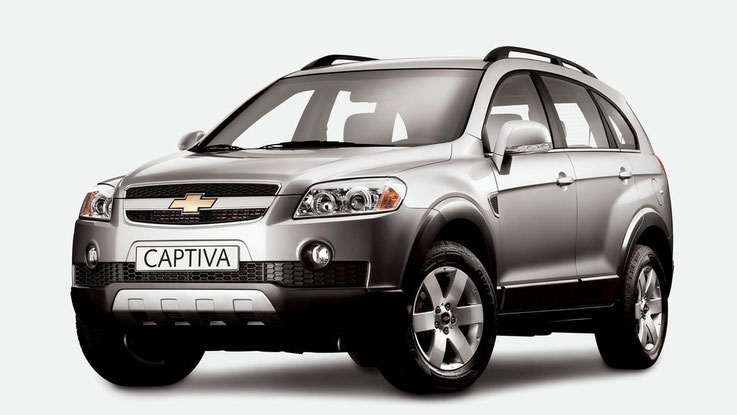The compact crossover SUV Chevrolet Captiva was a runaway success to say the least for General Motors, despite the fact that the first Gen was the result of the design team of GM Korea. The car was designed based on General Motor’s Theta platform and contrasted against a concept car unveiled in 2004, the S3X. The Captiva is associated with entry-level SUV categories which follows the design features and concept of the Opel Antara.
The 1st generation saw the model released as a front-wheel drive as a standard offering and all-wheel drive as an option that was powered a four-cylinder petrol (Alloytec) Holden V6 engine. Within a year a Korean (VM MOTORI) 2.0-L turbo-diesel engine was introduced and labeled as the C100.
The car was introduced to target markets in 2006 after its successful premier in 2004 at the Paris Motor Show as the S3X. The Captiva was marketed in Australia and New Zealand as the “Holden Captiva” from 2006 all the way to 2017 before the second generation of the Captiva was introduced.
The final version of the first generation of the Captiva came with a powerful 3.2-L V6 and 5-speed Auto transmission in 2007 and had the diesel powered 2.0-L engine that was alternatively offered with a five-speed manual and as well as automatic. Although the 1st Gen Captiva was initially manufactured in Korea prior to the production being moved to Thailand in September 2007 due to upgrades at the manufacturing facility in Korea in order for the Company (Daewoo) to cope with the rising demand that they were faced with.
The specs that were rolled out from the Thai facility came in four variants (SX, CX and the LX) with the fourth being a ‘top of the class’ version labeled as the Captiva MaXX. This rebadge was a close reminiscent of the Opel Antara and remained in Australian markets all the way up to 2008 and released as the 5-seater “Captiva 5” in 2009 and the 7-seater Chevrolet-based models badged as “Captiva 7”. Holden made an update to the Captiva’s in 2016 where Holden merged the Captiva 5 & 7 into a single 4th Gen and was designated as the “Series II”. The workshop manual for the Chevolet Capitva can be downloaded here.
The modification included a facelift that made the Captiva in essence more captivating by taking on a Chevrolet look sporting a Holden grille and air intake and rugged alloy wheels along with other various trimmings.
The 2nd generation Captiva was in fact a version of Baojun 530 which was developed by SAIC-GM-Wuling after initially making its debut in Colombia in 2018 and Thailand the following year. The 2nd Gen was marketed in specific markets in South America in 2019 before being offered in Thailand a few months later and the Middle East the following year.
It was made available in Mexico on this year and thus far sales have been promising. Based on the outcome of Captiva sales in existing markets, plans to offer them in emerging markets are underway and this includes countries such as Fiji, Brunei and Thailand where the first Gen was produced.

